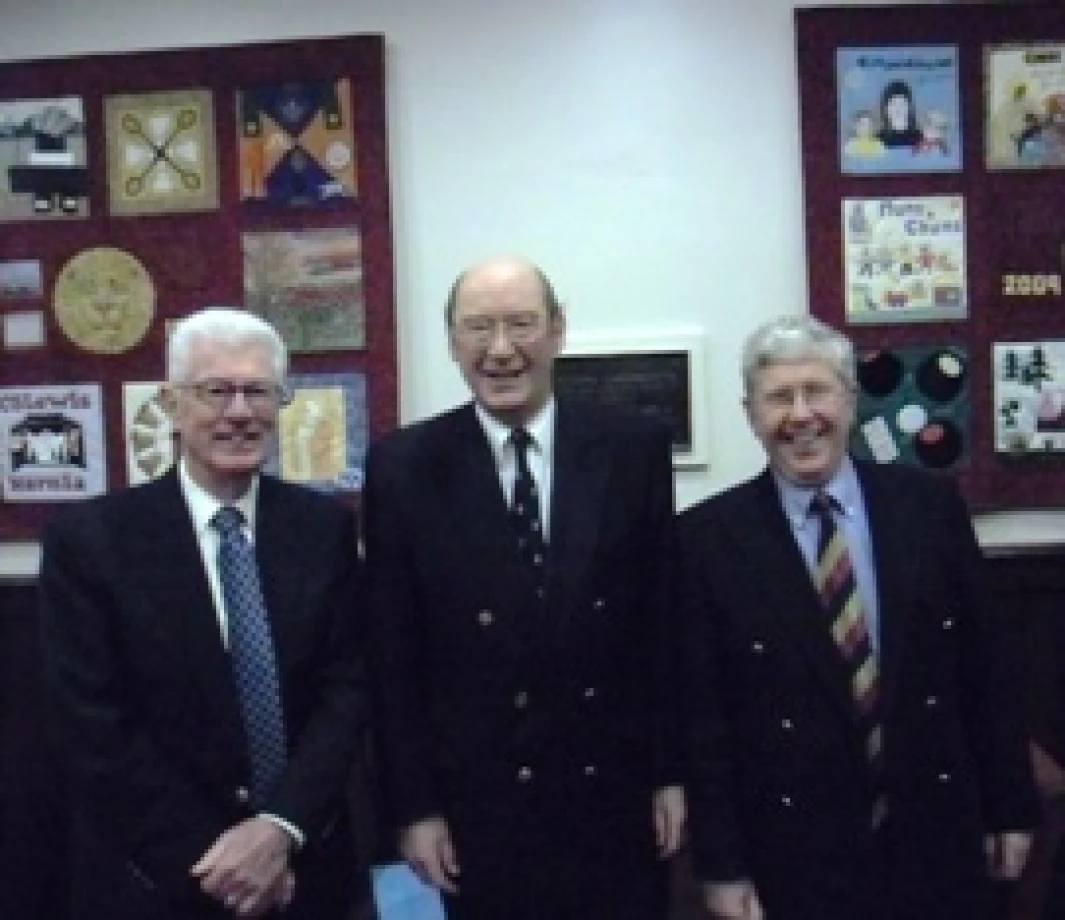Behind the scenes of international golf
[if !mso]><![endif][if gte mso 9]><xml> Normal 0 false false false EN-US X-NONE X-NONE MicrosoftInternetExplorer4 </xml><![endif][if gte mso 9]><![endif][if !mso]><![endif][if gte mso 10]><![endif]
International golf tournament referee, Mr Ian Webb, was the speaker at the recent February meeting of St Mark’s Dundela's Men's Group. In a speech filled with personal and statistical detail, laced with excellent wit, he told us of his experiences in four areas of the world of modern golf: the Royal and Ancient, the Open Championship, the Masters at Augusta, and the company of the famous professional golfers of the day.
The Royal and Ancient Golf Club of St Andrews (in Scotland) is indeed ancient; it was founded in 1754. It is a private and exclusive club of 1800 members, of whom 700 live overseas, all amateurs, who play golf on a public golf course, truly "open" to all golfers who wish to play and pay the green fees. By virtue of its age and the fact that its original members made the original 13 rules of golf, the R. & A. became the rule-making authority of the rules of golf, accepted by 114 golfing nations. Only the U.S. Golf Association, of equal prestige, stands apart and makes the rules of golf in America; however the two organisations co-operate to make the rules of world golf. The Old course of St Andrews was formed out of a rabbit warren beside the sea shore. The greens, apparently flat, but with an infinite number of rounded hollows and humps, require the utmost skill to putt the golf ball across them and into the hole; the bunkers, sand-filled pits in the ground, wait to trap the careless striker of the ball. That this is the original pattern for all golf courses across the world accounts for the prestige of St Andrews among millions of golfers.
Ian Webb became a member of the Royal and Ancient in 1986, and later became chairman of the General Committee. He has travelled to golf courses all over the world from Scotland to Tokyo, to Manila and Melbourne, as a tournament referee, giving expert advice to professional golfers on the complicated and multiple rules of golf, and sometimes having an “amicable” discussion with a highly-skilled golfer who needed clarification of a particular rule. He has refereed at the Masters and at the Open, and he admitted to feeling terrified when asked to make a difficult decision in front of TV cameras sending the picture to millions of viewers.
The Open Championship of golf, the oldest and most prestigious in the world is run by a large independent organisation, the Royal and Ancient, which arranges a tournament to be played every year on a selected golf course in the British Isles. Ambitious golfers all over the world compete to enter, qualifying by playing in tournaments in their own countries; and only the very best qualify, approximately seventy each year. Ian Webb as a member of the Rules Committee is a top referee at the Open every year, and he told us a few stories of his experiences there.
His home club is Royal County Down at Newcastle, and 14 years ago he was invited to become a member of Augusta National G.C. in the USA, where he is a member of the Tournament Committee. Augusta is a very private club, with only 300 members, of whom twelve are not Americans and he is the only man from N. Ireland in this exclusive group. The Masters tournament is played every year in April, one of the four major tournaments of professional golf, played on an exceedingly difficult course against a background of brilliantly coloured flowering shrubs, on perfect grass on the greens and in shining white sand in the bunkers. One famous golfer once described this as “playing golf at the Chelsea Flower Show”. The crowds who come every year to watch are almost as exclusive. They are devoted followers of the game, known as patrons, who have entrance to the tournament by holding a ticket for life.
Finally, Ian Webb spoke about some of the top professionals he has met and gave his opinions of their characters - their ability is well known to followers of golf. He highlighted the enormous sums of money they can earn by their skill: he told how one day at the Open he had been standing in the crowd watching Jack Nicklaus, the greatest golfer of the mid-twentieth century, playing his last round at St. Andrews. Standing beside him by chance was Tiger Woods, the greatest of the late twentieth century, and they had chatted about Nicklaus and golf, like any two ordinary golfers. “Tiger” was nothing like the cold, focussed player that is seen on television. He referred proudly to the three leading N. Ireland golfers, Graeme McDowell, Rory McIlroy and Gary Maybin. At all points in his talk Ian Webb was bombarded with questions from the floor, his answers being well-received, and at the end we applauded a fine speaker who had given us an excellent evening.
Photo caption left to right: Prof. Ken Bell, Convenor St, Mark’s Dundela Men’s Group; Mr Ian Webb and Mr Ronny McMillan, parishioner.
